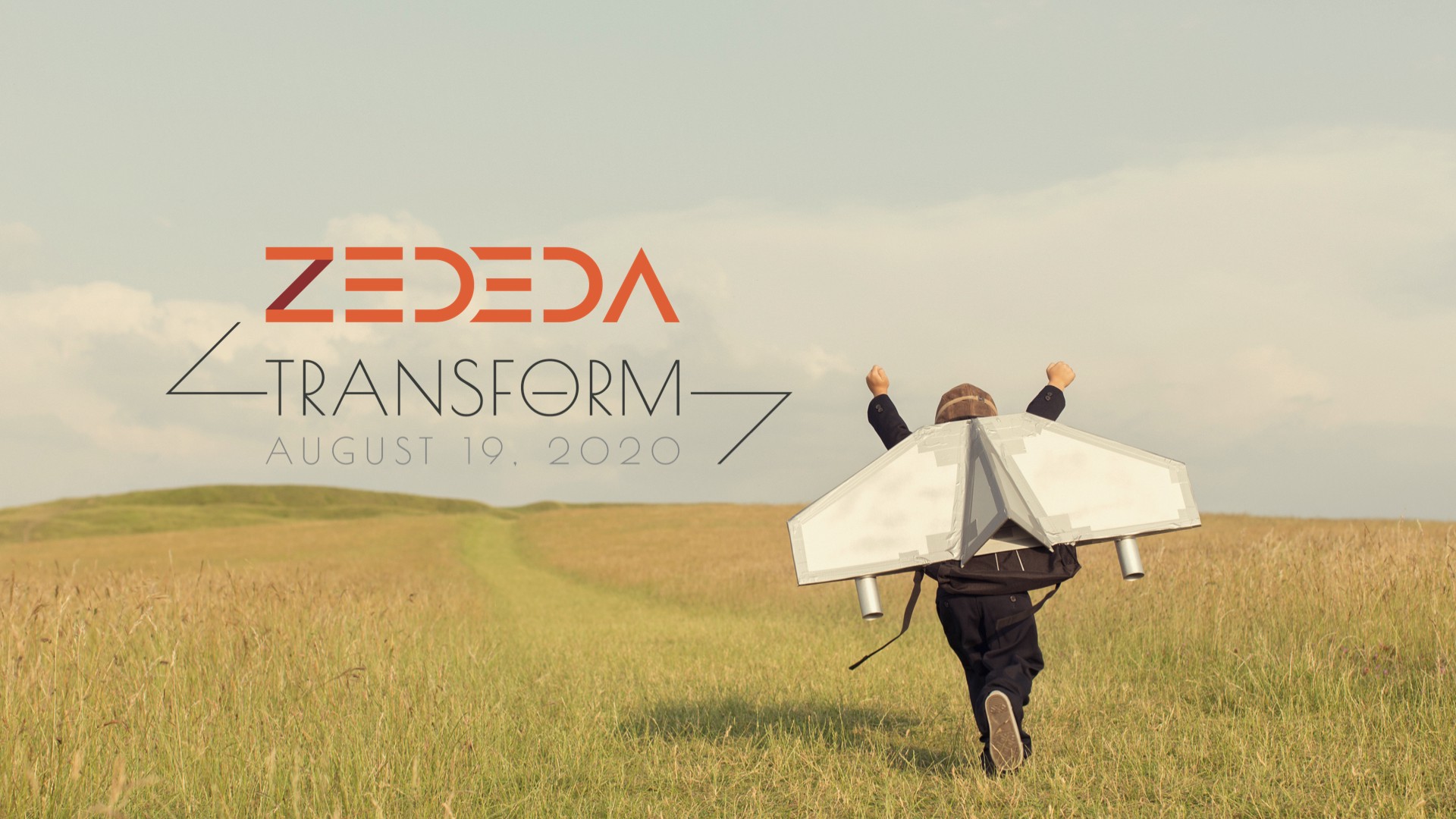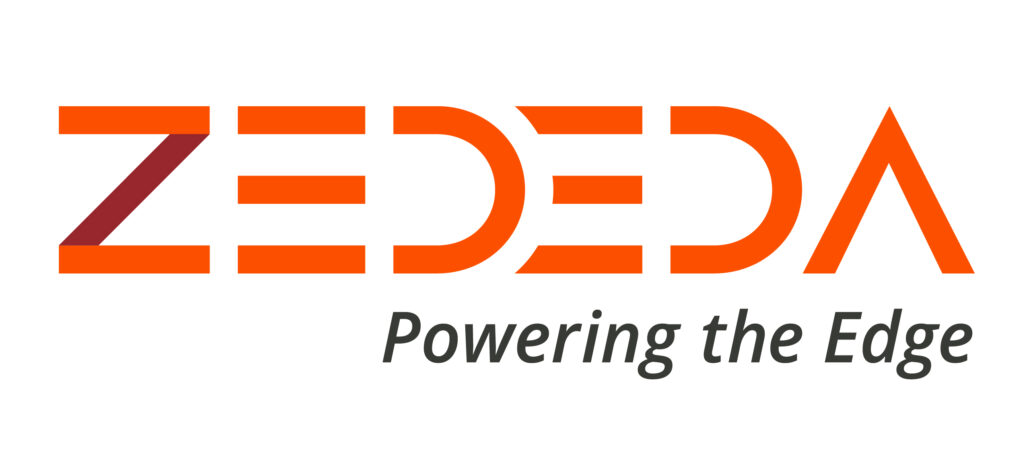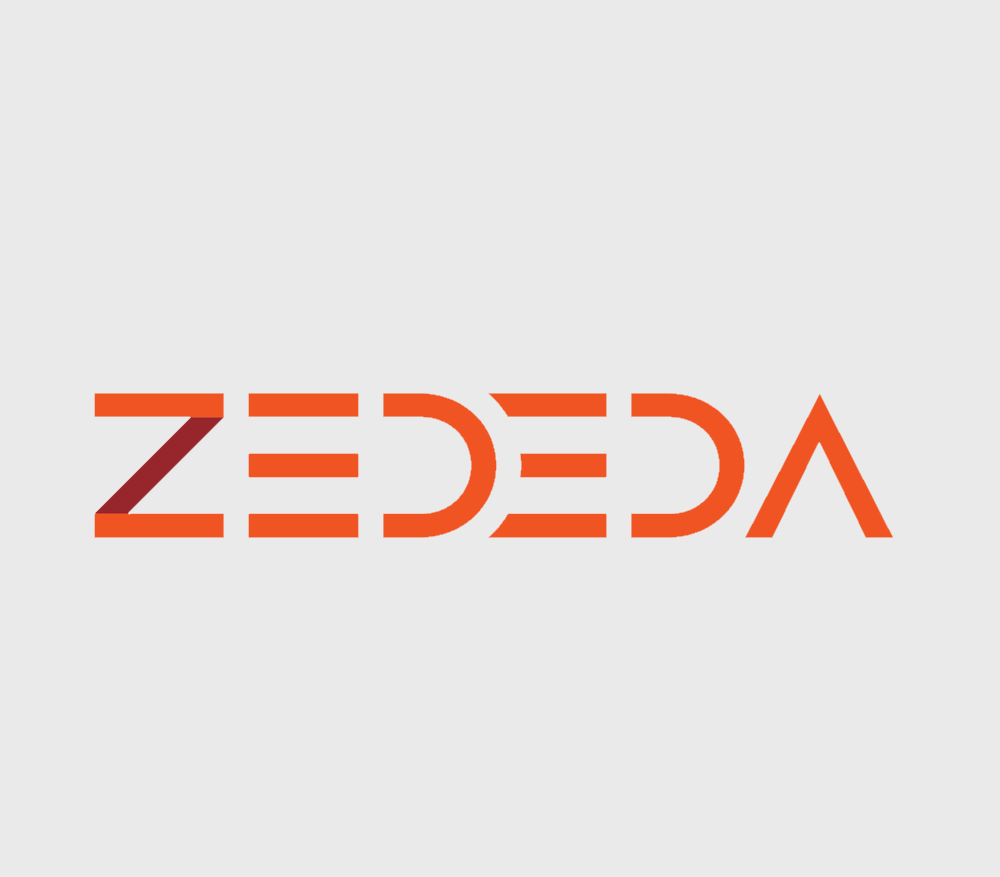
Recordings Available Here: https://zededa.com/transform
When we decided to host our inaugural technology and business conference to bring together people interested in digital transformation enabled by edge and IoT solutions, we figured we’d attract a few curious souls. But the first-ever ZEDEDA Transform event turned out even better than we imagined, with nearly 500 of 700 registrants attending a broad program of live sessions hosted online on Hopin.
The 67% attendance-to-registration ratio exceeds even virtual Coronavirus-era event standards, and we believe it’s in no small part testament to the fantastic roster of customers, thought leaders and technology providers from around the world that participated.
I wanted to share a few highlights from the day, but first, a big thank you to everyone who attended, presented, and moderated! We greatly appreciate the sharing of knowledge and expertise, which is so critical in emerging markets. If you didn’t get to attend live (or if you want to catch any of the session replays), we have made on-demand recordings available on our website. Meanwhile, read on for a brief synopsis of the day.
Opening Keynote: Connected, Trusted & Open Edge Ecosystems: The Next Era of Digital Transformation & Society (Said Ouissal, ZEDEDA)
Our CEO and founder, Said Ouissal, set the tone for the day with his opening keynote address on the vision and need for an open edge ecosystem. Said talked about the evolution of the connected world, starting back in 2015 when the Internet of Things was the hot tech trend. We’re now entering an era characterized by an increasing amount of computing at the edge as the amount of data generated by devices begins to overwhelm the cloud. Going forward, the lines between centralized and distributed computing will increasingly blur, with processing and applications being deployed across the edge-to-cloud continuum where it makes the most sense to balance outcomes and economics.
Said believes the next era will be about scaling data confidence, facilitated by trust fabrics. These trust fabrics will not only help protect user privacy and combat the fake data that’s increasingly being generated by AI, but also foster innovation to create entirely new experiences and business models enabled by interconnected ecosystems. Given that the majority of data — whether generated by users or people — originates at the edge, data trust is very much part of the edge conversation.
Opening Keynote Panel: The Importance of an Open Edge
I was honored to join my fellow panelists Matt Trifiro (Vapor.io, State of the Edge), Gavin Whitechurch (Topio Networks) and Gary Mintchell (Manufacturing Connection) as we talked with moderator Dave McCarthy (Research Director at IDC) about key considerations for edge computing, in addition to contrasting open versus closed ecosystem approaches.
Matt did a tremendous job of framing an essential point about the importance of open standards to accelerate ecosystems and new business models. He used an example from the 35mm film industry, where camera and film manufacturers got together and said, “let’s compete on optics, lenses, shutter mechanisms, film emulsion and the developing process, but let’s not compete on the distance between the holes in the film.”
A common theme on the panel was that it’s important to start small, but also architect for scale with a nucleus that creates a network effect. We talked about how open-source collaboration is the modern way to drive standards, and it enables developers to share investment on the basics so they can focus on value creation rather than reinvention.
We also discussed how building a common foundation for edge interoperability and value-creation is a key goal of the Linux Foundation’s LF Edge effort, noting that the foundation of ZEDEDA’s IoT Edge orchestration solution — Project EVE — is hosted within LF Edge alongside eight other open-source projects.
The key takeaway from the discussion was that regardless of whether you choose a more open or closed path, the right way to build an ecosystem is to architect the foundation into your product or service from the start. That’s very different than building something and then trying to figure out who to partner with to sell it.
Breakout Sessions
The breakout sessions covered a wide variety of insightful topics. In one track, partner-led solution webinars focused on key considerations and use cases in various industries such as building automation, energy, manufacturing, oil and gas and retail. The second track featured thought leadership panels on key technology and business topics such as Security, Edge AI, Digital Twin, Business Model Innovation, Building Ecosystems, OT/IT Convergence and COVID response.
Frankly, each session could be its own blog post, with insightful commentary from top analysts and thought leaders including Stephanie Atkinson (Compass Intelligence), Harry Forbes (ARC Advisory), Stacey Higginbotham (Stacey on IoT), Evan Kirstel (eVira), Leonard Lee (neXt Curve), Daniel Newman (Futurum), Dilip Sarangan (Frost and Sullivan), Richard Soley (OMG), Rob Tiffany (Ericsson) and more. Not to mention industry representatives doing innovative work at Accenture, Advantech, Agora, Arrow, ClearBlade, Cognizant, Hewlett Packard Inc., Hewlett Packard Enterprise, FogHorn, Inductive Automation, Lanner, Microsoft, Relayr, SAS, Supermicro, VMware and more.
I highly encourage you to check out the on-demand recordings. In the meantime, here are a few paraphrased sound bites:
“The same way we put our source code in a repository, there’s always a tendency in early technology to lock it in, but if we’re going to be successful, we need to have these pieces of applications that can be exported and moved around.” — Aaron Allsbrook, ClearBlade, State of the Stack: Best Practices in Edge and IoT Architecture
“IT security for the business has to come in and shape it a little differently than these absolute cyber requirements that they’re used to. Now it’s more like, here are solutions and platforms that are flexible with boundaries.” — Chris Shaunfield, Accenture, Edge Security
“Having standards is a good thing because it’s certainly a mess out there. Just like the dawn of every other technology, whether it’s the PC revolution or smartphones, or whatever, it always starts with tons of players and then you see consolidation. IoT and Digital Twin are exactly the same.” Rob Tiffany, Ericsson, Digital Twin and AR/VR. In addition to speaking on the need for interoperability for Digital Twins to scale, Rob also made a good analogy with the troubleshooting scene from the movie Apollo 13 when it came to defining a Digital Twin.
“Many people have different perspectives on what digital transformation is, but the common core across this understanding is how profitably the businesses can utilize their data in solving their objectives.” — Niranjan Patel, Samsung, Digital Transformation Enabled by Edge AI
“If I was to liken [OT/IT convergence] to a baseball game, I’d say we’re in the 4th or 5th inning. IT has come a long way in the last few years towards recognizing that OT is serious about adding more devices and that they have to figure out how to secure these devices and connect to third-party systems”. Brian Turner, Buildings IoT, Navigating OT/IT Convergence
Mike Fahrion, Advantech, echoed this sentiment, adding “we’ve come a long way and rarely do I go to a meeting now that’s just OT and they’re trying to keep it hush-hush from IT, or vice-versa. They’re at least all in the room together — it may be a dysfunctional relationship more so than others, but we’re making headway”. Meanwhile, Ginger Smith of Honeywell explained how we’re currently in an OT revolution that’s being bridged by platforms like Forge. Gary Mintchell, Manufacturing Connection, highlighted “a trend I’m seeing now is that the farsighted plant managers are putting the OT and IT leads in offices side by side”. All-in-all, it was a great discussion on a topic that often feels like a couples counseling session.
“We come across two styles of CxOs… one camp that’s very concerned with the pandemic and the resilience of the business and increasingly a camp who is concerned about how the competitive lines are blurring… we’re moving to a services economy that spans geographical boundaries”. Guneet Bedhi, Relayr Innovating with Managed Services in a 5G World. Steve Mullaney, Aviatrix, summed it up with “the reason digital transformation is real is because businesses have serious existential threats to their existence… this, combined with the pandemic is accelerating investment in both cloud and edge technologies.”
“I’m suggesting that a new role is required: a digital orchestrator. Someone who’s got one foot in the business camp and one foot in the technology ecosystem.” — Andy Timm, CrucibleWorx, Matchmaking in the Ecosystem
“When decision latency matters most, we can provide real-time alerts and notification to whoever needs that information. I’m going to continue to beat that message: When it comes to COVID, speed and faster decisions can save lives.” — Paul Venditti, SAS, Remote Monitoring for Health and Safety
“I don’t think the edge is so new per se… we’ve had software and computers running in Industrial and Retail environments on-premise for years. What’s new is the chance to reconsider how we deploy the edge… bringing the cloud mentality to fleets of devices, enabling us to quickly re-provision if they fail, spin up clusters, etc.“ — Brad Corrion, Intel, Introduction to Project EVE and Bridging to Kubernetes
As our very own Roman Shaposhnik summarized next, “The edge is the last cloud that we need to build.” The panel also discussed the importance of open source collaboration to drive standards and stop reinvention on the “boring stuff”, in addition to how IoT Edge efforts like Project EVE are bridging to the Kubernetes world. Check out Brad’s nice summary blog on that session as well.
Closing Keynote Panel: Industry Trends in Buildings, Energy, Manufacturing, Oil and Gas, and Retail
This closing session was an ideal way to end the day, hearing about the underlying need for a consistent, open infrastructure built to support the unique technological and domain-specific needs of particular industries. Moderator Dilip Sarangan from Frost & Sullivan skillfully wove together stories from Mariya Zorotovich (Intel Retail), Nithiyakumar Parameswaran (Rockwell Automation), Prithpal Khajuria (Intel Energy) and Abuzar Manager (Agora) as they discussed vertical challenges, opportunities, and future direction.
Mariya made a point about her work in retail that applies across a broad spectrum: “If you had to consolidate it into two themes, it’s a conversation around agility and a conversation around resiliency. And that’s where there are some nuances in different verticals, but the business is going to want agility, flexibility and scale to serve their customer in any way.”
All of the sessions made the power of the network effect clear. It’s not about trying to do or own everything. Instead, it’s about collaborating on a nucleus that creates a snowball effect so you can then focus on value creation by doing something really well. It’s important to not underestimate the potential of increasingly interconnected ecosystems spanning various markets, and an open foundation it required for this to happen.
Again, thanks to everyone who made our inaugural event such a great success! Remember, you can check out recordings of all the sessions at zededa.com/transform and drop us a line if there’s anything we or our growing roster of ecosystem partners can do to help.
See you next year!




